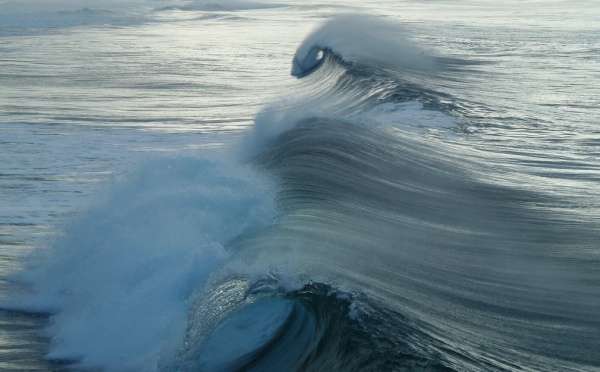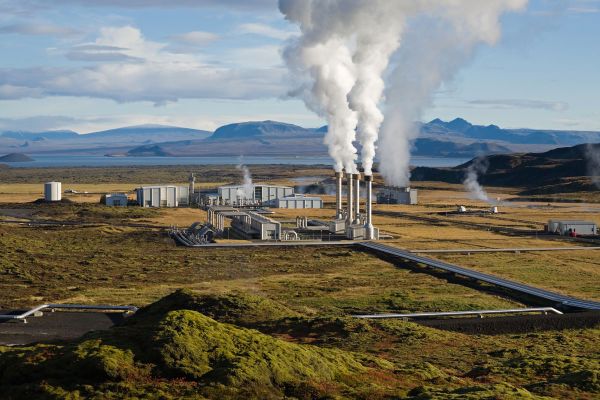
The quest for clean sources of energy have so far focused on wind and solar. These two forms of renewable energy have received research spending and time. All round the world, wind turbines and photo voltaic power plants are being built. However, there are other sources of renewable energy that could soon begin to look practical. Some of these, like wave energy, are more promising than the others. There is need, however, to also watch other technologies to see if any of these could help meet at least a part of the ever growing energy needs of humankind.
1. Wave power alternative energy source

Anyone who has walked on a seashore would have observed the continuous formation of waves that gather momentum and bring a large quantum of water to crash against the shore. This wave action is continuous and has power enough to erode the rocks on the seashore. Several alternative approaches to harnessing wave energy are being attempted.
The first attempt is by Wavegen that has installed a 250 KW facility off the coast of Scotland. When waves arrive near the shore, the water level surges. The water level then falls as the wave recedes. This change in water level inside a closed chamber will drive the air in the chamber to be expelled when the water level rises. This air stream is used to drive a turbine to produce electricity. When the wave recedes, the water level in the chamber falls, causing air to flow in. This air flow also drives the turbine. After installation on the Scottish coast, more installations are being made around Europe to refine the technology.
The same principle of rise and fall of water is being used in a wave energy buoy that has been installed in the open sea off the coast of New Jersey. Instead of near a coast, the buoy is installed in open ocean and the wave action causes the buoy to move up and down generating electricity.
Other designs also find means to use the wave action to produce electricity. A long floating tank with hinged joints called Pelamis has been anchored on the ocean surface. Wave action causes the hinged tube to flex that pumps hydraulic fluids to drive a turbine. Another approach to using hydraulic fluids is the so-named Oyster Wave Energy where a hinged breakwater structure faces the waves. When the structure moves under wave action, hydraulic fluids are pumped on-shore to drive turbines.
A Norwegian company is also attempting to install multilevel breakwaters at the site of abandoned oil rigs in the North Sea. When a wave hits the breakwater, water is trapped in a series of vertical pockets. This water is allowed to flow through a turbine generating electricity.
All these different approaches do promise that wave energy could soon get harvested as another form of renewable energy.
2. Piezoelectricity alternative energy source

Piezoelectricity is the property of certain crystalline materials such as quartz or topaz to produce an electric charge when a mechanical force is applied to it. The simplest example of piezoelectricity usage is in the gas lighter we use to light our gas cooking stove. When a spring pressure is applied to the crystal in the lighter, it causes an electric arc that lights the stove. The voice microphone is another common example of piezolectricity where the variations in voice pressure moves a diaphragm to cause electric signals.
The present uses of piezoelectricity have been few. For example, certain discotheques have installed piezoelectric floors to power strobe lights from the feet movement of dancers. Some gyms have used piezoelectricity from the gym machines, to generate a part of the power used by them. The same idea is being thought of for sidewalks of city streets where the pedestrian traffic could generate power to operate traffic signals and sidewalk illumination.
3. Geothermal energy

The inside of the earth is extremely hot due to volcanic activity. At the core of the earth, the temperatures are estimated to be as high as 6000 degrees Celsius. In places where this activity is not fully contained inside the earth, there is expulsion of hot water in the form of geysers. Geothermal energy seeks to exploit this naturally occurring heat as the source for power generation. Worldwide, over 10,000 Megawatts of power is already being produced from geothermal energy. The US leads with over 3100 MW and Philippines produces close to 1900 MW. Some 24 countries around the world have operating geothermal plants.
Geothermal energy could occur in the form of steam escape or in the form of hot water. If steam is available, it is used for power generation by further heating it. If, as is more common, hot water is expelled from earth, this water is used in a heat exchanger to generate power. Geothermal energy has also been used in certain parts of the world for home heating instead of power generation. The capital costs for geothermal power generation are low, mainly pumps. New plants are also being located close to tectonic fault locations by drilling, to cause hot water or steam to come to the surface.
4. Underwater trubines

Ocean currents are massive bodies of water that traverse the globe. The Gulf Stream is the most prominent, that flows past the Atlantic coast of the US. Scientists have proposed that a 100 feet diameter turbine located in the path of the Gulf Stream could generate several megawatts of power. The turbine located underwater would be connected to a floating buoy anchored to the surface which would house the auxiliary equipment and serve to evacuate the power generated to the mainland of Florida.
While the Gulf Stream is one prominent ocean current, there are ocean currents in all the seas and scientists suggest that once the technologies get proven, up to 10% of the world’s energy needs could be met from ocean currents.
5. Human power

The human being is also a renewable power source, converting the food he eats into mechanical power through his muscles. To be sure, the world produces electricity to help the human save muscle power but some of that muscular energy could be regenerated into power.
We have already seen the idea of using pedestrian footfalls on sidewalks to generate piezoelectricity. Several gyms are beginning to use human power to regenerate a part of the electricity that they use for lighting or air conditioning. Such ideas could get extended for human beings to volunteer cranking of a wheel or moving a pedal when they are sitting idle for long periods, for example during a bus or train ride. A more practical immediate application would be in the so-called kinetic chargers for portable electronic devices like mobile phones or music players. If the act of walking or jogging can recharge the portable electronic devices, it could save the energy drawn in plugging these into utility power sockets.
In conclusion, researchers are continuing to look for alternative sources of renewable energy beyond wind and solar. As works proceed on exploring other energy sources, there is the hope for more sources of clean energy to become available.




